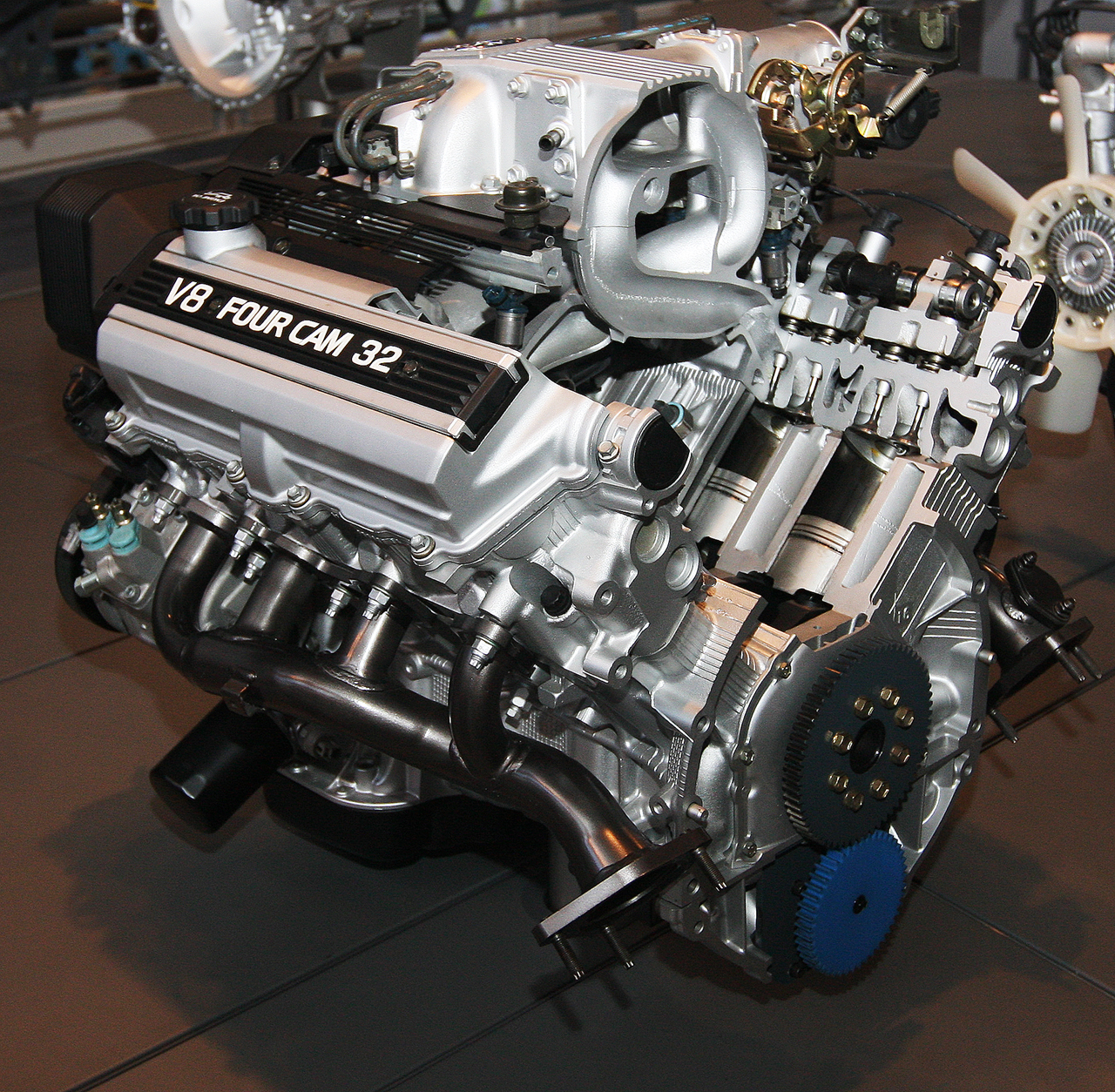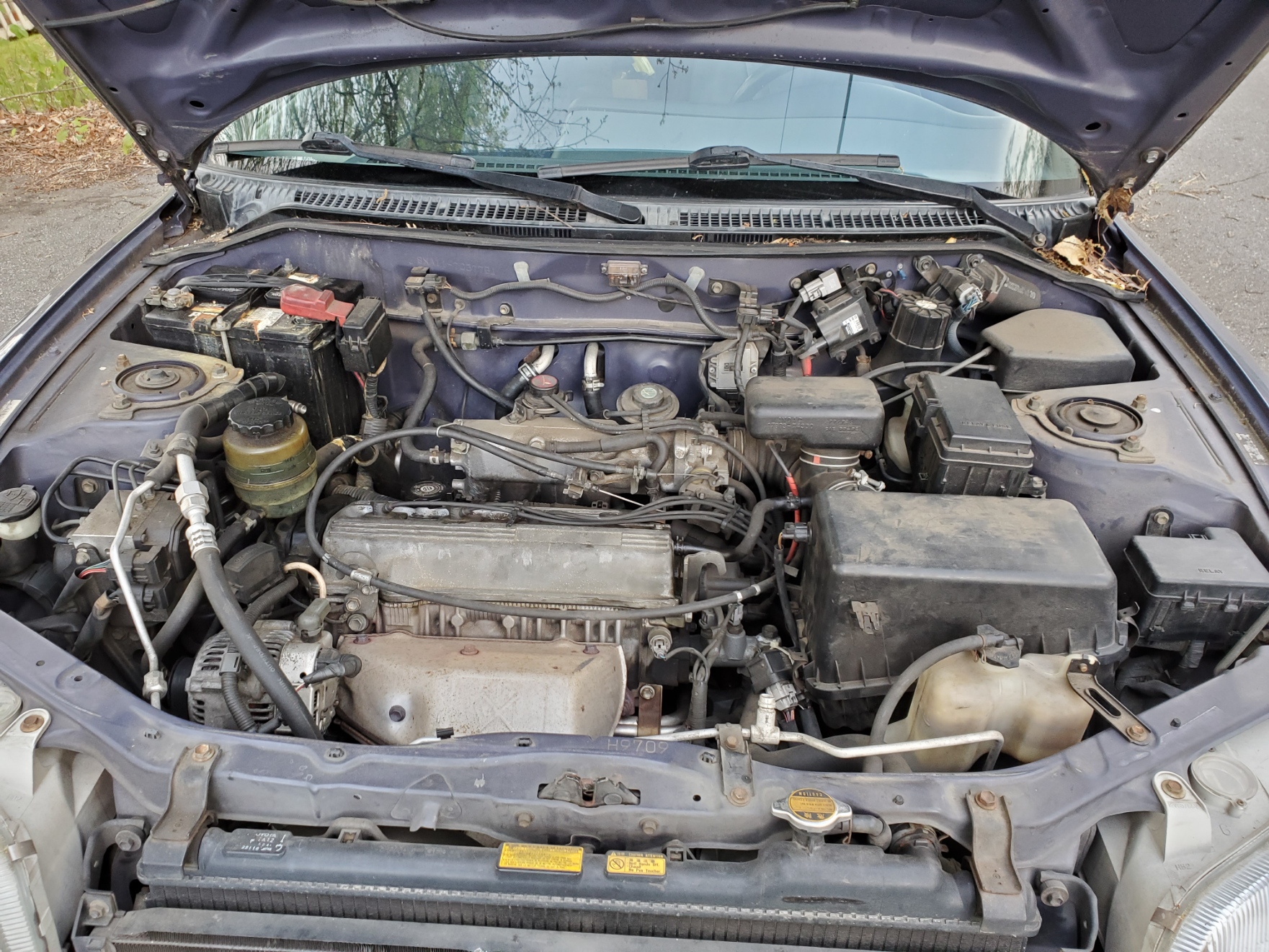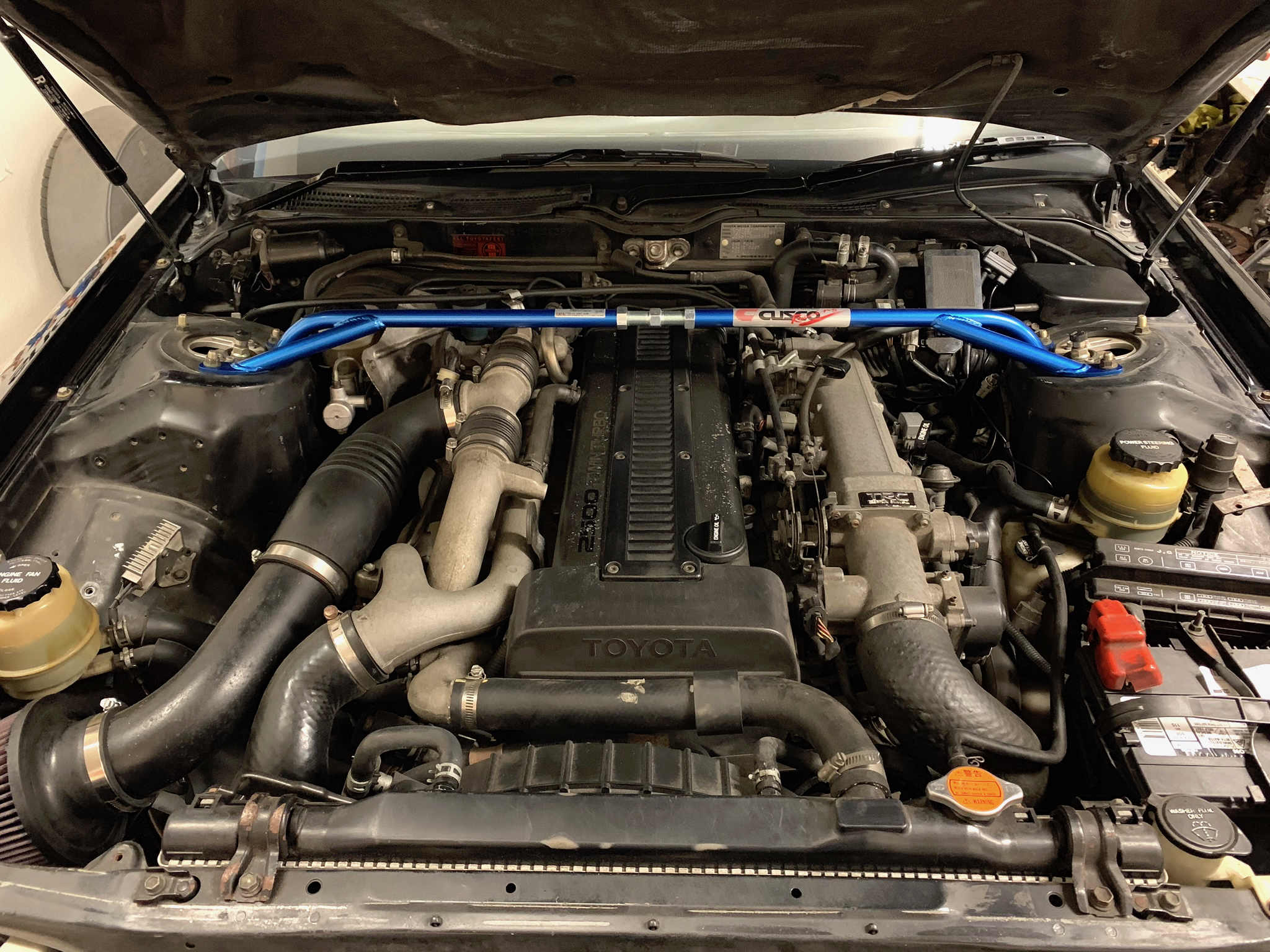|
Acoustic Control Induction System
''Acoustic Control Induction System'', or ACIS, is an implementation of a variable-length intake manifold system designed by Toyota. Simply put, the ACIS system uses a single intake air control valve located in the intake to vary the length of the intake tract in order to optimize power and torque, as well as provide better fuel efficiency and reduce intake "roar". The engine control unit (ECU) controls the position of one or more air control valves based on input signals from throttle angle and engine RPM. The vacuum switching valve (VSV) which controls the vacuum supply to the actuator is normally closed and passes vacuum to the actuator when it is energized by the ECU. By energizing the VSV vacuum is passed to the actuator, closing the air control valve. This effectively lengthens the intake manifold run. By de-energizing the VSV, vacuum to the actuator is blocked and trapped vacuum is bled off of the actuator diaphragm. Toyota ACIS is an On/Off system. The valve (or valves in ... [...More Info...] [...Related Items...] OR: [Wikipedia] [Google] [Baidu] |
Toyota M Engine
Toyota Motor Corporation's M family of engines were a longitudinally mounted straight-6 engine design. They were used from the 1960s through the 1990s. All M family engines were OHC designs. While the M family was born with a chain-driven single camshaft it evolved into a belt drive DOHC system after 1980. All M family engines used a cast-iron block with an aluminum cylinder head, and were built at the Toyota Kamigo plant in Toyota City, Japan. The M-E variant, available only in the Japanese domestic market, was the first Toyota engine to be equipped with fuel injection (at the same time as the 4-cylinder 18R-E). The 4M-E was the first Toyota engine to be equipped with fuel injection for non-Japanese markets. The M family were Toyota's most prestigious engines (apart from the uncommon '' V family'' V8) for 30 years. They were commonly found on the large Toyota Crown, Mark II, and Supra models. M The first M was a version produced from 1965 through 1988. It was a 2- ... [...More Info...] [...Related Items...] OR: [Wikipedia] [Google] [Baidu] |
T-VIS
Toyota Variable Induction System, or T-VIS, is a variable intake system designed by Toyota to improve the low-end performance of multi-valve engines. T-VIS is intended to improve the low-end torque of high-performance, four-stroke internal combustion engines - by changing the geometry of the intake manifold according to the engine rotation speed. The system uses two separate intake runners per cylinder, one being equipped with a butterfly valve that can either open or close the runner. All valves are attached to a common shaft which is rotated by a vacuum actuator outside the manifold. T-VIS does not actually keep one of the intake valves from opening or seal off the port for one valve.''Toyota Twin Cam'' p. 11 The engine control unit (E ... [...More Info...] [...Related Items...] OR: [Wikipedia] [Google] [Baidu] |
Toyota VZ Engine
The Toyota VZ engine family is a series of V6 gasoline piston engines ranging from in displacement and both SOHC and DOHC configurations. It was Toyota's first V6 engine, being made as a response to Nissan’s VG engine, one of Japan’s first mass-produced V6 engines. The VZ family uses a 60° V-angle design, and introduced many changes for Toyota, including various EFI, ECU, and engine improvements from generation to generation. The low angle DOHC and SOHC cylinder heads excel in low-mid torque and power, making the VZ series well-suited for various uses in cars, trucks, and SUVs. The blocks are all strongly made using cast iron with large interconnected main bearing cradles and two bolt main bearing caps. Cylinder heads are made from aluminum. Forged steel crankshafts, and cast iron main bearing support girdles became standard with the 3VZ-FE. Piston and ring construction are typical parts, with rods varying between large and very large for stock V6 production engines ... [...More Info...] [...Related Items...] OR: [Wikipedia] [Google] [Baidu] |
Toyota UZ Engine
The Toyota UZ engine family is a gasoline fueled 32-valve quad-camshaft V8 piston engine series used in Toyota's luxury offerings and sport utility vehicles. Three variants have been produced: the 1UZ-FE, 2UZ-FE, and 3UZ-FE. Production spanned 24 years, from 1989 to mid 2013, ending with the final production of the 3UZ-FE-powered Toyota Crown Majesta I-FOUR. Toyota's UZ engine family was replaced by the UR engine family. 1UZ-FE The all-alloy 1UZ-FE debuted in 1989 in the first generation Lexus LS 400/ Toyota Celsior and the engine was progressively released across a number of other models in the Toyota/Lexus range. The engine is oversquare by design, with a bore and stroke size of . It has proven to be a strong, reliable and smooth powerplant with features such as 6-bolt main bearings and belt-driven quad-camshafts. The water pump is also driven by the timing/cam belt. The connecting rods and crankshaft are constructed of steel. The pistons are hypereutectic. The FV24 ... [...More Info...] [...Related Items...] OR: [Wikipedia] [Google] [Baidu] |
Toyota UR Engine
The Toyota UR engine family is a 32-valve dual overhead camshaft V8 piston engine series which was first introduced in 2006, as the UZ series it replaced began phasing out. Production started with the 1UR-FSE engine with D4-S direct injection for the 2007 Lexus LS. The series launched with a die-cast aluminum engine block, aluminum heads, and magnesium cylinder head covers. All UR engines feature variable valve timing for both intake and exhaust cams or Dual VVT-i. Timing chains are used to drive the camshafts. The UR engine has been produced in 4.6, 5.0, and 5.7-liter displacement versions. 1UR 1UR-FSE The 1UR-FSE V8 engine, introduced with the Lexus LS 460 & LS 460 L luxury sedans in 2006 has a displacement, which it gets from a bore and stroke of . The engine includes D4-S direct injection and dual VVT-iE producing at 6,400 rpm and at 4,100 rpm. 1UR-FSE undergoes X-ray inspection and a CT ( computed tomography) scan to ensure minimal deformation after t ... [...More Info...] [...Related Items...] OR: [Wikipedia] [Google] [Baidu] |
Toyota MZ Engine
The Toyota MZ engine family is a piston V6 engine series. The MZ series has an aluminium engine block and aluminium alloy DOHC cylinder heads. The cylinders are lined with cast iron, and is of a closed deck design (no open space between the bores). The engine is a 60 degree V6 design. It uses multi-port fuel injection (MFI), four valves per cylinder, a one-piece cast camshaft and a cast aluminium intake manifold. The MZ family is a lightweight V6 engine of an all-aluminium design, using lighter weight parts than the heavier duty VZ block engines in an effort to lower production costs, decrease engine weight, and decrease reciprocating weight without sacrificing reliability. Toyota sought to enhance the drivability pattern of the engine (over the 3VZ) at exactly 3000 rpm, since that was the typical engine speed for motors cruising on the highway. The result was less cylinder distortion coupled with the decreased weight of rotating assemblies, smoother operation at that engine ... [...More Info...] [...Related Items...] OR: [Wikipedia] [Google] [Baidu] |
Toyota S Engine
The Toyota S Series engines are a family of straight-4 petrol or CNG engines with displacement from 1.8 L to 2.2 L produced by Toyota Motor Corporation from January 1980 to August 2007. The series has cast iron engine blocks and alloy cylinder heads. Table of S-block engines 1S The 1S is the first version of the S-series engine. It is a member of Toyota's ''Lasre'' engine family (''Lightweight Advanced Super Response Engine''). Bore and stroke are 80.5 x 90.0 mm. The engine was first seen in 1981, and was fitted to a wide range of Toyotas, in both RWD and FWD applications. 1S (1S-U) Original ''1S'' engine, designed for longitudinal, rear-wheel-drive applications. Designated ''1S-U'' with Japanese emissions controls. * Production: July 1981 — unknown * Displacement: 1832 cc * Mounting: longitudinal * Type: SOHC 8-valve * Bore/stroke: 80.5 × 89.9 mm * Compression ratio: 9.1 * Outputs: ** at 5,400 rpm / at 3,400 rpm * Applicat ... [...More Info...] [...Related Items...] OR: [Wikipedia] [Google] [Baidu] |
Toyota JZ Engine
The Toyota JZ engine family is a series of inline-6 automobile engines produced by Toyota Motor Corporation. As a replacement for the M-series inline-6 engines, the JZ engines were 24-valve DOHC engines in 2.5- and 3.0-litre versions. 1JZ The 1JZ version was produced from 1990 to 2007 (last sold in the Mark II BLIT Wagon and Crown Athlete). Cylinder bore and stroke is . It is a 24-valve DOHC engine with two belt-driven camshafts and a dual-stage intake manifold. 1JZ-GE The 1JZ-GE is a common version, with a 10:1 compression ratio. Output for the early non-turbo, non-VVT-i (1990–1995) 1JZ-GE was at 6000 rpm and at 4800 rpm. VVT-i variable valve timing was added in 1995, for an output of at 6000 rpm and at 4000 rpm. Like all JZ-series engines, the early 1JZ-GE is designed for longitudinal mounting and rear-wheel-drive. All of these models only came with a 4-speed automatic transmission; no manual gearbox option was offered. 1JZ-GTE The 1J ... [...More Info...] [...Related Items...] OR: [Wikipedia] [Google] [Baidu] |
Variable-length Intake Manifold
In internal combustion engines, a variable-length intake manifold (VLIM),variable intake manifold (VIM), or variable intake system (VIS) is an automobile internal combustion engine manifold technology. As the name implies, VLIM/VIM/VIS can vary the length of the intake tract - in order to optimise power and torque across the range of engine speed operation, as well as help provide better fuel efficiency. This effect is often achieved by having two separate intake ports, each controlled by a valve, that open two different manifolds - one with a short path that operates at full engine load, and another with a significantly longer path that operates at lower load. The first patent issued for a variable length intake manifold was published in 1958, US Patent US2835235 by Daimler Benz AG. There are two main effects of variable intake geometry: ;Swirl: Variable geometry can create a beneficial air swirl pattern, or turbulence in the combustion chamber. The swirling helps distribute ... [...More Info...] [...Related Items...] OR: [Wikipedia] [Google] [Baidu] |
Toyota GZ Engine
The Toyota GZ engine family consists of a single model, the 1GZ-FE. This engine is used as the powerplant for the second generation Century limousine from 1997 to 2017. 1GZ-FE The 1GZ-FE is a 48-valve DOHC V12 engine with variable valve timing (VVT-i). Bore is 81 mm and stroke is 80.8 mm, with a compression ratio of 10.5:1. The official power output advertised in Japan per the gentlemen's agreement is at 5,200 rpm, though it was advertised as in export markets. Peak torque of is at 4,000 rpm with over available from as little as 1200 rpm. The Electronic fuel-injection system is controlled by two ECUs, one for each bank of six cylinders. The engine is capable of running on either bank should a malfunction occur. In 2010 the standard engine was revised in order to meet tough fuel economy and emissions standards, reducing power slightly and peak torque to although this torque figure had been advertised in export markets since at least 2004. ;A ... [...More Info...] [...Related Items...] OR: [Wikipedia] [Google] [Baidu] |
Toyota GR Engine
The Toyota GR engine family is a gasoline, open-deck, piston V6 engine series. The GR series has a 60° die-cast aluminium block and aluminium DOHC cylinder heads. This engine series also features 4 valves per cylinder, forged steel connecting rods and crankshaft, one-piece cast camshafts, and a cast aluminium lower intake manifold. Some variants use multi-port fuel injection, some have D4 direct injection, and others have a combination of direct injection and multi-port fuel injection or D4-S. The GR series replaces the previous MZ V6 and JZ inline-6, and in the case of light trucks the VZ V6. ''Note: Power ratings have changed due to SAE measurement changes for 2006 model year vehicles. Toyota rates engines on 87 pump octane, Lexus rates engines on 91 pump octane.'' 1GR 1GR-FE The 1GR-FE is the version, designed for longitudinal mounting in RWD and 4WD pickup applications. It has a bore and a stroke of . Output is at 5200 rpm with of torque at 4000 rpm ... [...More Info...] [...Related Items...] OR: [Wikipedia] [Google] [Baidu] |







